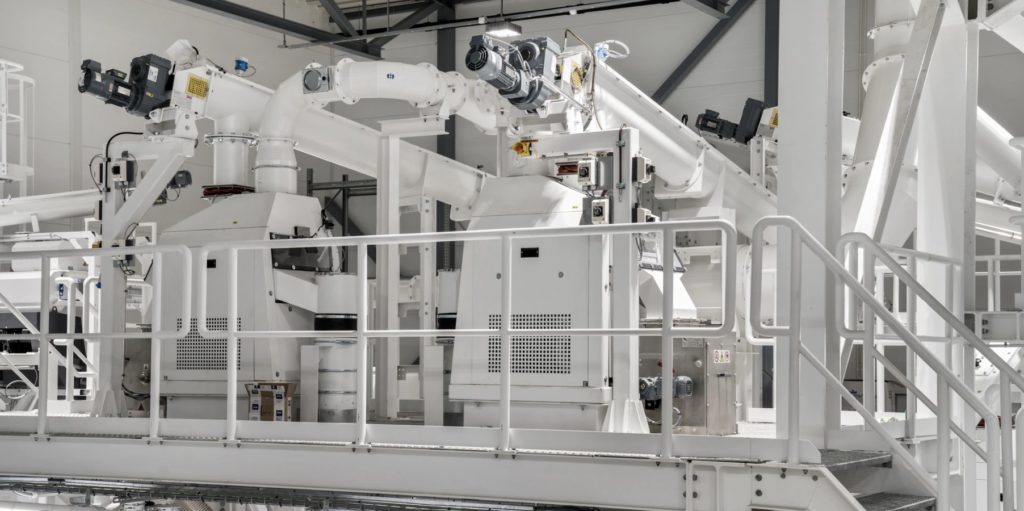Dead EV batteries – why recycling and repurposing matter
07 July 2022

Carmakers are ramping up the production of electric vehicles (EVs), which begs the question: what is going to happen to the batteries inside electric cars once they reach the end of their lifecycles? Autovista24 journalist Rebeka Shaid takes a closer look.
Millions of electric cars will eventually come off the road and regulations surrounding end-of-life batteries are under review in the EU, which wants to ensure that these automotive components can be reused or repurposed.
EV batteries have become a strategic market, not just in Europe. Global demand for batteries is forecast to surge 14-fold by 2030, and this means the pressure will be on for carmakers, suppliers, and recyclers to tackle the rising number of these used components.
EV batteries contain plenty of valuable raw materials, so letting these components go to waste should not be an option. As the automotive industry strives to become more sustainable and is paying greater attention to circular economy approaches, recycling becomes an obvious choice.
The life span of an EV battery can vary and lie anywhere from 10 to 20 years. But so-called end-of-life EV batteries still hold 70 to 80% of their initial capacity, making them suitable for second-life applications such as energy storage services.
Recycling and repurposing batteries are two of the main strategies to handle some of the EV waste that will inevitably occur as vehicle manufacturers switch to electromobility. While both options offer specific advantages, challenges remain.
Battery recycling: benefits and hurdles
Recovering non-renewable resources is a key benefit of recycling EV batteries. After all, raw materials are limited and prices for rare earths are going through the roof. Hence, reusing these materials sounds appealing from a cost and, moreover, an environmental perspective. Making batteries more circular can cut carbon emissions, reduce pollution, and overall help to make the battery value chain more sustainable.
But there are challenges as not every battery is the same, which could make it difficult to establish efficient recycling systems. As battery chemistries differ, taking the cells apart is a tricky and costly business that the automotive industry and recyclers need to be prepared for.
Another factor to take into consideration is that lithium-ion batteries – the most common EV batteries – are toxic and can cause fires, especially when they are stored together. This means fire-risk minimisation needs to be implemented early on in the recycling process during dismantling and shredding.
‘EV batteries are not one size fits all,’ Katharine Hole, CEO of the Australian Battery Recycling Initiative, told Autovista24. ‘There are four main lithium-battery chemistry combinations and different overall product designs and packaging. This means that recycling facilities need to be able to manage these chemistries and changing product design.’
Hole added that the value of the metals in an EV battery also varies greatly, meaning economical profits would differ. Some of the most valuable minerals can be a small percentage of the overall battery, which could then reduce the commercial benefit. This is the case for lithium-iron-phosphate batteries, which can offer a longer life span compared to lithium-ion batteries.
‘Lithium-iron-phosphate batteries have low financial returns. And of course, then there are all the non-metal components, which need to be processed as well,’ Hole said.
Australia, home to key mining companies, is a leading producer of raw materials and rare earths needed for electrification. Hole highlighted that there was an emerging trend among automotive and mining firms integrating battery recycling operations. This can open up opportunities or new commercial models in the battery-recycling industry.
‘Mercedes-Benz has established a battery-recycling subsidiary which is using Neometals, an Australian company’s recycling technology,’ she said. ‘There are also a number of mining and mineral processing companies moving into battery recycling as there are opportunities to apply mineral processing technology to recovering the minerals out of batteries.’
12,000 tonnes of battery packs
In Europe, various large-scale recycling projects are dedicated to making the process more sustainable. One of the companies focussed on battery recycling is Hydrovolt, a joint venture between Swedish battery startup Northvolt and Norwegian energy and aluminium company Hydro.
The company operates a recycling plant in Fredrikstad, Norway, and is the first of its kind. The country is an early adopter of electric cars and that, means it already needs solutions for dealing with end-of-life EV batteries.
The site can handle 12,000 tonnes of battery packs annually, the equivalent of 25,000 EV batteries, and is focussed on minimising its environmental impact. It recovers copper, plastics, aluminium and, crucially, black mass. This is made up of valuable metals including nickel, manganese, cobalt, and lithium, which Hydrovolt circulates back into new products.
The company told Autovista24 that it wants to ensure no battery is wasted.
‘We are laying the foundations for a sustainable and circular supply chain for batteries in Europe. To succeed with battery recycling, we must ensure that we have strong and forward-leaning battery regulations that incentivises sustainable European battery production, and that is strict in implementation and follow-up so that everyone must deliver on the same requirements.’
Regulating what happens to end-of-life batteries is of relevance, given that only 12% of aluminium, 22% of cobalt, 8% of manganese, and 16% of nickel used within the EU is recycled. Policymakers are trying to change that, with regulators aiming to introduce mandatory minimum levels of recycled content by 2030.
Battery repurposing
Apart from recycling, battery repurposing is also gaining traction in the automotive and transport industries. All second-life batteries will ultimately reach the end of their life cycles, which means they too will likely be recycled to develop new EV batteries. Even so, repurposing batteries helps to extend the usage of raw materials, with the EU eager to set requirements relating to repurposed EV batteries.
Stationary power sources provide opportunities for second-life EV batteries. Repurposing could then help lower the need for additional power production and reduce landfill waste. In order to be used, repurposed batteries would have to be sorted and graded to determine how much energy is left for reassembly in another product.
Again, technological challenges remain as manufacturers develop battery packs with varying chemical complexities. A key challenge is to achieve standardisation to enable repurposing initiatives.
‘Some batteries can continue their life as repurposed, for example to store energy that can be used commercially. That is however not possible and economical for all batteries,’ said Hydrovolt. Nonetheless, the company believes that to make the transition to renewable and sustainable energy a success, ‘we need both solutions – recycling and repurposing.’
Meanwhile, Hole cautioned that there was still a lot of work to be done to ensure that consumers who purchase repurposed batteries are fully informed about the product they are receiving and that risks are minimised.
‘Fire agencies are understood to have concerns about the safety of battery repurposing due to risks. Therefore, a strong safety and consumer protection framework, including warranty chain, is required. Tracking over an EV batteries life may also be needed,’ Hole said.
Interest in repurposing batteries is growing in the automotive industry, with Swedish carmaker Volvo recently investing nearly €5 million in Connected Energy, a UK-based second-life battery energy storage company. The manufacturer said there was ‘a great deal of untapped potential’ in the second-life use of batteries.
While recycling and repurposing EV batteries are two entirely different approaches to handling these end-of-life components, they offer significant opportunities to reduce landfill and carbon emissions in the automotive sector.
Still, obstacles need to be overcome as both processes are time-consuming, expensive, with levels of efficiency varying when it comes to recovering raw materials. Manufacturers will also need to design battery packs with recycling and repurposing in mind. Discarding EV batteries is a major waste management problem, but the opportunity is present to make a change.



